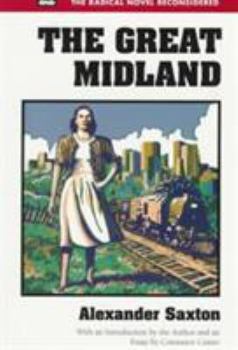The Great Midland
Select Format
Select Condition 
Book Overview
One of the best novels ever to portray the lives of American Communist activists, The Great Midland is a story of love and radical politics set just before World War II. It was published in 1948, when cold-war hysteria engulfed the United States; the publisher subsequently tried to pretend the book did not exist, and review media and bookstores ignored it. The book vividly depicts the multiracial and multiethnic alliances that developed...
Format:Paperback
Language:English
ISBN:0252065646
ISBN13:9780252065644
Release Date:May 1997
Publisher:University of Illinois Press
Length:384 Pages
Weight:0.15 lbs.
Dimensions:0.9" x 5.4" x 8.0"
Customer Reviews
1 rating
Finely nuanced historical novel about American labor
Published by Thriftbooks.com User , 21 years ago
Ignored by its publisher and the public (except by federal agents) when it was first published in 1948, "The Great Midland" will still be avoided by those who think it's no more than a novel by a Communist writer about Communists laborers. That would be shame, since the book is far more nuanced than the usual agitprop from the era. While several of the main characters are indeed Communist "agitators", the book is a multigenerational saga about American labor, racial strife, and ethnic communities. And it's an atypically realistic love story.The plot of "The Great Midland" frequently recalls Steinbeck's early labor novels; Saxton slyly quotes both the "in dubious battle" passage from "Paradise Lost" and "grapes of wrath" stanza from the "Battle Hymn of the Republic." In Saxton's book, activists (some Communist, some not) struggle to organize Chicago railroad labor against both the callousness of the corporate structure, the hostility of law enforcement, and the unresponsiveness of the union. Unlike most novels at either end of the political spectrum (such as the pro-capitalist manifestos of Ayn Rand or the pro-labor sermonizing of "In Dubious Battle"), "The Great Midland" does not offer easy answers, and it does not portray its many heroes, Communist or not, as faultless. Saxton's characters have very human failings, they often bring their own bad luck on themselves, and the path to the utopia they envision is fraught with danger, dashed hopes, and the potential for abuse. Unfortunately, the same cannot be said about the bosses or the police, whose menace approaches caricature and whose motives or personal lives are never explored.At the center of the tale are Dave Spaas and Stephanie Koviak--married, separated, and reunited as they attempt to balance their individual desires and societal concerns, to resolve the battle between the personal and the political. They have entirely different, often clashing worldviews: while Dave fights to allow people "to live better and longer," often to his own neglect, Stephanie believes people should "cram into each individual enough living to last for eternity." One of the more memorable characters in the novel, their friend Pledger McAdams, most successfully achieves a balance between these two opposing aims--in spite of the fact that, as a black, he faces daily discrimination. Unfortunately, the wheels of commerce, bigotry, and corruption conspire to rob Pledger of his well-earned status and happiness.In sum, "The Great Midland" deserves to be read as much for its historical interest and for its realistic portrayal of the human condition as for its political message.





